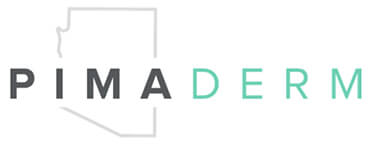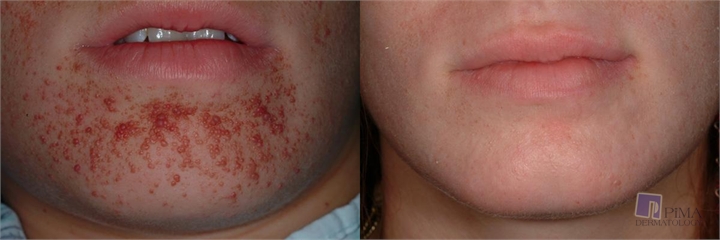 Tuberous sclerosis (also known as TSC or Bourneville’s disease) an uncommon genetic (autosomal dominant) disorder that affects approximately one in 6,000 individuals with approximately one million people affected worldwide. TSC may cause tumors to form in various organs. In addition to the skin, growths may occur in the brain, eyes, heart, kidney, and lungs. There is a wide spectrum of disease severity with some people mildly affected, while others may experience a seizure disorder, developmental delay, or mental retardation.
Tuberous sclerosis (also known as TSC or Bourneville’s disease) an uncommon genetic (autosomal dominant) disorder that affects approximately one in 6,000 individuals with approximately one million people affected worldwide. TSC may cause tumors to form in various organs. In addition to the skin, growths may occur in the brain, eyes, heart, kidney, and lungs. There is a wide spectrum of disease severity with some people mildly affected, while others may experience a seizure disorder, developmental delay, or mental retardation.
The skin manifestations include white (ash leaf-shaped) lesions present at birth, or small flesh to red pimple-like lesions which develop on the face of adolescents (“adenoma sebaceum”). These lesions may resemble acne but do not resolve on their own.
Other skin findings include raised flesh-colored lesions on the face or body (“shagreen plaques”), and growths that can occur over nail beds (“digital fibromas”).
TSC can be inherited from an affected parent, but two-thirds of cases occur sporadically without either parent having any signs of this condition. A genetic chromosome test is available to aid or confirm a diagnosis. These tests are also available to determine if one is at risk to develop the condition and the possibility of passing it on to the next generation.
Treatments
Many treatments exist to treat the skin’s manifestations. The most common reason for one to seek treatment is to improve the appearance of raised red lesions on the face (“adenoma sebaceum”). There are a variety of lasers that can be used to improve these lesions. If the lesions are red and relatively flat, one of the vascular lasers (particularly the Pulsed Dye Laser – PDL) can be very effective to decrease redness and control the growth of these lesions.
For raised lesions, a more aggressive treatment is necessary such as Dermabrasion, Electrosurgery, or a more commonly used laser treatment with a Carbon Dioxide (CO2 ) or Erbium:YAG laser. Dr. Goldberg does use combination treatments using both modalities concurrently, first the PDL then the CO2 laser to achieve optimal results (see photos below).
While most treatments can be done at Pima Dermatology with sedation and local anesthesia, some treatments need to be performed under general anesthesia at an outpatient surgical center. Recurrences of the raised lesions do occur over time, which can necessitate additional treatments over the years.
Additional Information/Links:
www.tsalliance.org
www2.massgeneral.org/livingwithtsc/
en.wikipedia.org/wiki/Tuberous_sclerosis
Before and After Treatment
Devices used to treat this condition:
Vbeam Pulse Dye Laser
Next, read about sun damage.





